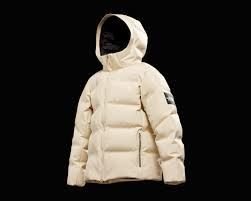Exploring Sustainable Fashion: Lab-Grown Fabrics and Innovative Textiles. What is the latest news with these, and why do they appear so scarce?
One of the most fascinating areas of Sustainable Fashion is the frontiers of Sustainable material innovation, including lab-grown, cellulosic and recycled innovations. It is one of the most satisfying subjects when done with awareness and innovation. I am so inspired when I look at the Stella McCartney materials strategy.
Image curtesy of Stella McCartney
The growth of fast fashion and clothing production has relied upon low-cost materials, primarily cotton and polyester–either thirsty crops or dirty fabrics (using oil). Cheap fashion is not clean; the dependency on these fabrics has led to fashion being the third most polluting industry (after oil and agriculture). Using such fabrics is an easy solution to meeting margin targets and speed-to-market. Yet, we all know this is not sustainable. So, what have been the developments for those committed to transforming these fabric offerings?
One important area and a greener alternative is Cellulosic Fabrics.
Cellulosic fabrics, such as Tencel, Modal, and Lyocell, are increasingly gaining popularity in the fashion industry for their numerous benefits for sustainable fashion. These fabrics are made from cellulose, a plant-based material, which makes them biodegradable and eco-friendly. These fabrics are derived from renewable sources such as wood pulp from trees and bamboo, making them a more environmentally friendly alternative to synthetic or petroleum-based fabrics. Additionally, the production process for cellulosic fabrics requires fewer chemicals and less water compared to other types of fabrics, reducing the fashion industry’s environmental impact.
These fabrics are a great alternative to cotton and especially polyester, as they are easier to recycle and reuse. The production of these fabrics does not have the same impact as non-natural synthetics. The fabrics are also less impactful at the end of life, resulting in a much reduced environmental impact.
Other exciting developments include lab-grown or biofabricated materials, including “Modern Meadow”, “Spiber”, and “Bolt Threads”. Who raised considerable investment when money was cheaper. They are providing extraordinary alternatives to such impactful materials as silk and leather. These innovations are lab-grown alternatives to some of our most-used materials, especially leather.
These innovative materials provide robust solutions to their dirty and thirsty predecessors. So, what could possibly go wrong?
A recent article in “Business of Fashion” posed the question, “Are New Materials Ready to Go Mainstream?” The answer appears to be “no”. Why is that?
There are several factors contributing to this. Firstly, there was so much hype around the creation of these materials when the scalability did not happen within the speed the fashion industry demands. As a result, sadly, there are halts in the evolution and scalability of many of these much-anticipated material innovators. Bolt Threads announced in July 2023 that it was halting production. On August 23, Amyris filed for bankruptcy.
The BoF article goes on to state, “When Business gets tough, Brands opt for cheaper and more proven materials.” The article also discusses the viability of recently exciting fabric and fibre developments and how these materials must have equivalent or better properties than fossil-based materials to gain a commercial competitive advantage.
So what is The Road Ahead?
Certainly, we need alternatives to dirty and thirsty materials. However, they must be viable, priced within reality and accessible. The easiest step forward must lie within the cellulosic fibre groups. The lab-grown and bio-fabricated innovations have huge potential, but they also need to be realised commercially to transform the world of fashion materials.
As always, have fun, love life, and enjoy fashion.
Take care,
Kate xx



